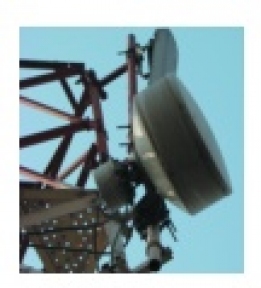Operator outlook on infrastructure sharing

-
By 2008, Bharat Sanchar Nigam Limited also joined the fray and started sharing passive infrastructure. The Telecom Regulatory Authority of India gave the green signal for sharing active infrastructure during the same period. In 2009, granting telecom licences to new operators provided a further impetus infrastructure sharing. All these efforts have today resulted in the operator-totower ratio going up to 1.8.
Infrastructure sharing is of two kinds: active and passive. Sharing of passive infrastructure refers to the sharing of towers (including physical sites, buildings, shelters, power supply and battery backup) and in-building solutions (including antenna systems as well as cabling and passive devices such as combiners and splitters). Active infrastructure sharing includes the sharing of antenna, feeder cables, base transceiver stations, transmission equipment and backhaul/backbone.The sharing of spectrum is not yet permitted in the country.
Passive infrastructure sharing is today considered a big business enabler for operators. This is because it helps in meeting business growth objectives; optimising investments and resources; enabling new lines of business; sharpening business focus, and enhancing cost efficiencies.
Active infrastructure sharing has not yet been adequately tapped. It permits a seamless sharing of equipment with frequencies ranging from 800 MHz to 2100 MHz, improves population coverage by allowing an operator to leverage another's network, reduces the capex required to roll out the network, reduces expenditure for operating the network in low-subscriber regions and facilitates quick network rollout. This is achieved via inter/intra-circle roaming, backhaul/backbone and transmission equipment. However, active sharing is yet to pick up in a big way.
The following is the possible future direction for passive infrastructure sharing from an operator's perspective:
Spectrum sharing presents an opportunity that is yet to be explored and exploited. The following could be the future direction for active infrastructure sharing:
Sandip Basu, Whole-time Director and CEO, Loop Mobile and Telecom
To ensure improved, effective and efficient operations, operators must think out of the box in two areas: services and technology. With regard to services, the following are important:
Operators, however, have to deal with several challenges. These include a possible conflict of interest between operators, an "as-is-where-is" approach, a sole focus on savings, increasing costs, lack of differentiators, security concerns and lack of ownership. To resolve these issues, the operators and infrastructure providers have to come together and work on a common platform to get the best out of the industry.
Vikas Arya, Director, National Network Operations, Sistema Shyam TeleServices
- Most Viewed
- Most Rated
- Most Shared
- Related Articles
- Rural Telecom in India: Abhishek Chauhan...
- Gujarat telecom market
- Future of mobile applications in India: ...
- Shared infrastructure in India: Jaideep ...
- Broadband in India: Santosh Anchan, Port...
- Passive Telecom Infrastrucure In India: ...
- Infrastructure sharing in India: Arun Ka...
- 3G users in India will touch 400 million...
- Streamlining Communication Product Lifec...
- T&M in India: Rajesh Toshniwal, Founder ...






